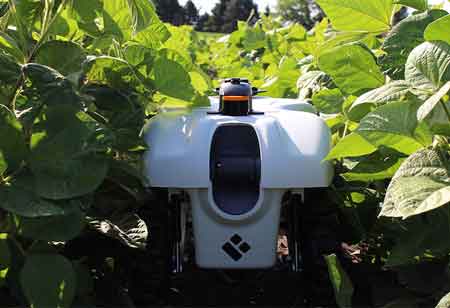Thank you for Subscribing to Agri Business Review Weekly Brief
What is the Significance of Precision Agriculture
Modern technologies such as satellite imagery and field mapping are used in precision farming to improve crop quality and profitability.

By
Agri Business Review | Thursday, May 18, 2023
Stay ahead of the industry with exclusive feature stories on the top companies, expert insights and the latest news delivered straight to your inbox. Subscribe today.
Precision Agriculture comes with numerous key advantages, such as an increase in profitability, improved harvestability, and cost reductions.
FREMONT, CA: Modern technologies such as satellite imagery and field mapping are used in precision farming to improve crop quality and profitability. Furthermore, it optimizes the use of traditional resources. As a result, this agricultural management system promotes sustainable agriculture, solving both economic and ecological problems.
GPS, drones, and satellite images are some of the technologies used in such a system. Through this data, farmers receive information about crop status, weather forecasts, environmental changes, etc. Additionally, precision farming differs from traditional agriculture in that it allows fields to be managed not as a single block but as separate areas. Zoning allows diversifying management decisions: adjusting fertilizer amounts, optimizing technique movement, and using fuel more efficiently.
Precision agriculture has the following benefits:
Precision agriculture benefits both growers and the environment. Furthermore, environmental degradation worsens agricultural conditions, thus interconnecting these areas. The following are just a few advantages of such a control system:
Minimizing the cost of materials and resources, such as fuel, seeds, and water;
Reducing pesticide use to maintain soil health;
Reducing agriculture's dependence on the weather;
Maximizing the genetic potential of the crops produced.
Precision farming allows farmers to improve the quality of their products and reduce their costs at the same time.
The following are some precision agriculture technologies and methods:
Precision agriculture and the Global Positioning System (GPS): GPS is a ground-based technology that allows growers to gather data with accurate location information in real-time. The following tasks are suitable for GPS:
Irrigation, field, and road mapping;
Detection of problem plants in certain areas;
Testing the soil in specific fields;
Tractor with parallel steering;
Precision seed and fertilizer application with VRA.
GPS is also used in precision agriculture to control agricultural machinery. With its help, growers can drive tractors in poor visibility due to rain or fog, for instance.
Precision agriculture using satellite remote sensing: Satellite images are used by growers to monitor yield health. In addition, they provide information on moisture stress, disease, structural anomalies, and nutrient levels. Today's precision agriculture satellite imagery has a high spectral resolution, so growers can get the most accurate information possible.
In order to determine the cause of deviations from the norm, growers should combine scouting with satellite remote sensing. Satellite imagery can also be used to select agricultural chemicals and plan plant treatments.
Fuel and labor costs are not increased with this method compared to GPS.





